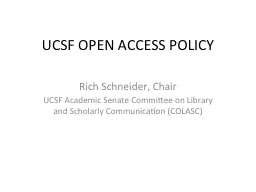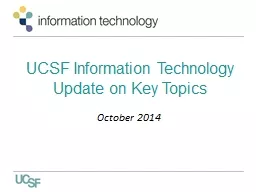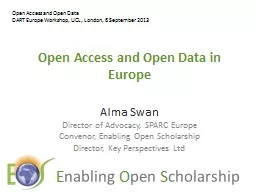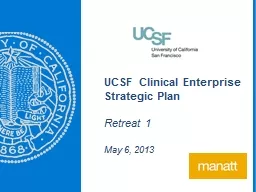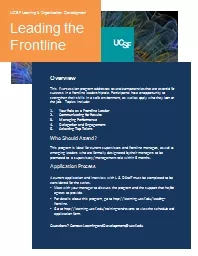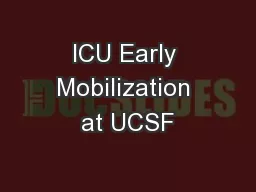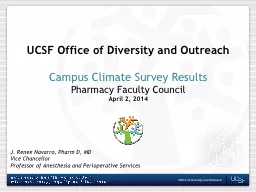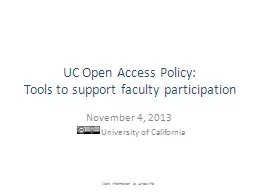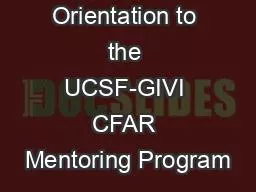PPT-UCSF OPEN ACCESS POLICY
Author : faustina-dinatale | Published Date : 2017-10-05
Rich Schneider Chair UCSF Academic Senate Committee on Library and Scholarly Communication COLASC UCSF OPEN ACCESS POLICY Costs of the current closed system of scholarly
Presentation Embed Code
Download Presentation
Download Presentation The PPT/PDF document "UCSF OPEN ACCESS POLICY" is the property of its rightful owner. Permission is granted to download and print the materials on this website for personal, non-commercial use only, and to display it on your personal computer provided you do not modify the materials and that you retain all copyright notices contained in the materials. By downloading content from our website, you accept the terms of this agreement.
UCSF OPEN ACCESS POLICY: Transcript
Download Rules Of Document
"UCSF OPEN ACCESS POLICY"The content belongs to its owner. You may download and print it for personal use, without modification, and keep all copyright notices. By downloading, you agree to these terms.
Related Documents

